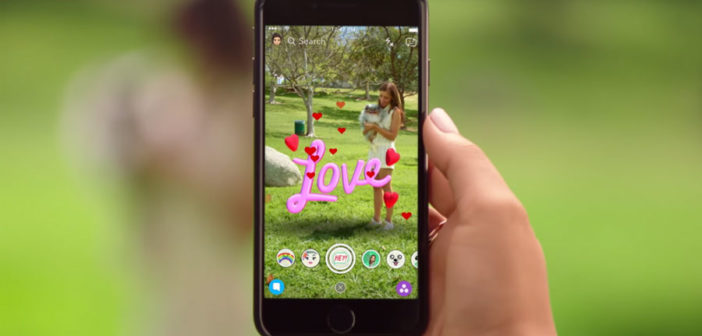Snapchat’s head of e-commerce and streaming, Fintan Gillespie, has hinted where the commercial potential of its augmented reality capabilities lies, saying brands could allow shoppers to visualise how products will look in the real world before purchase.
In April, Snapchat launched a feature called World Lenses, which lets users overlay pictures taken using their rear-facing camera with a series of interactive 3D filters. The messaging app monetised the tool just one month later, with Warner Bros signing up as one of the first brands to take advantage of its capabilities.
Speaking at an event hosted by digital agency Jellyfish in London today (20 July) Gillespie pointed to Snapchat’s extremely popular dancing hot dog World Lens – which has inspired hundreds of memes – as an example of how advertisers could eventually use the tool to place virtual objects in everyday environments. He said for some brands, it essentially means they can let Snapchatters try products before they buy.
“We haven’t actually brought this to any brands yet,” he admitted. “But you can imagine this being able to show a new BMW in your drive way or a Burberry handbag on your desk. This is where this will go.”
Retailers are already using AR in this way for some time. Ikea has rolled out an AR catalogue that lets shoppers preview furniture in their homes, while Gap recently developed an app that lets shoppers try on virtual clothes.
Snapchat’s recent ‘Colourista’ Lens for L’Oreal, which let users change their hair colour, is another sign of things to come for how the platform forsees brands benefiting from its AR tech.
While it’s been tried and tested by retailers before Snap’s 166 million-strong userbase would be able to deliver this experience to users at scale through World Lenses.
The technology behind the dancing hot dog Lens emerged from Snap’s acquisition of Israeli startup Cimagine last year. Gillespie said Cimagine had previously worked with the likes of Coca-Cola, with reps for the drinks brand using it to show clients things like how Coke’s vending machines would look in their units.
Stressing its ambitions for the product, Gillespie said World Lenses are “super interesting,” for the Venice Beach-based firm and that it is currently pondering how it can make advances in the space.
During the Game of Thrones season seven premiere earlier this week both HBO and Sky Atlantic worked with Snapchat to deploy a mixed reality Lenswhich gave users the chance to transform themselves into one of the show’s White Walker ice zombie characters. When a user switched to the rear-view camera their surroundings were transformed into snowy landscape and one of the creatures was shown advancing towards them, with the user being given the option to shoot the figure (Pokemon Go-style) with a dagger.
“These are very immersive, they bring [users]into the scene. This is where this sort of Lens technology will go, it’s not just about selfie lenses, it’s about augmenting the world,” he said.
Gillespie said Snap’s traditional front-facing camera selfie Lenses were proven by Nielsen metrics to create a “halo effect” for brands using them increasing both brand awareness and purchase intent.
He pointed to Vodafone UK as a brand seeing results, saying its Christmas-themed filter clocked up 17 million views in one day, while branded Mother’s Day Lens in the UK reached 15 million people.
–
This article first appeared in www.thedrum.com
Seeking to build and grow your brand using the force of consumer insight, strategic foresight, creative disruption and technology prowess? Talk to us at +9714 3867728 or mail: info@groupisd.com or visit www.groupisd.com


